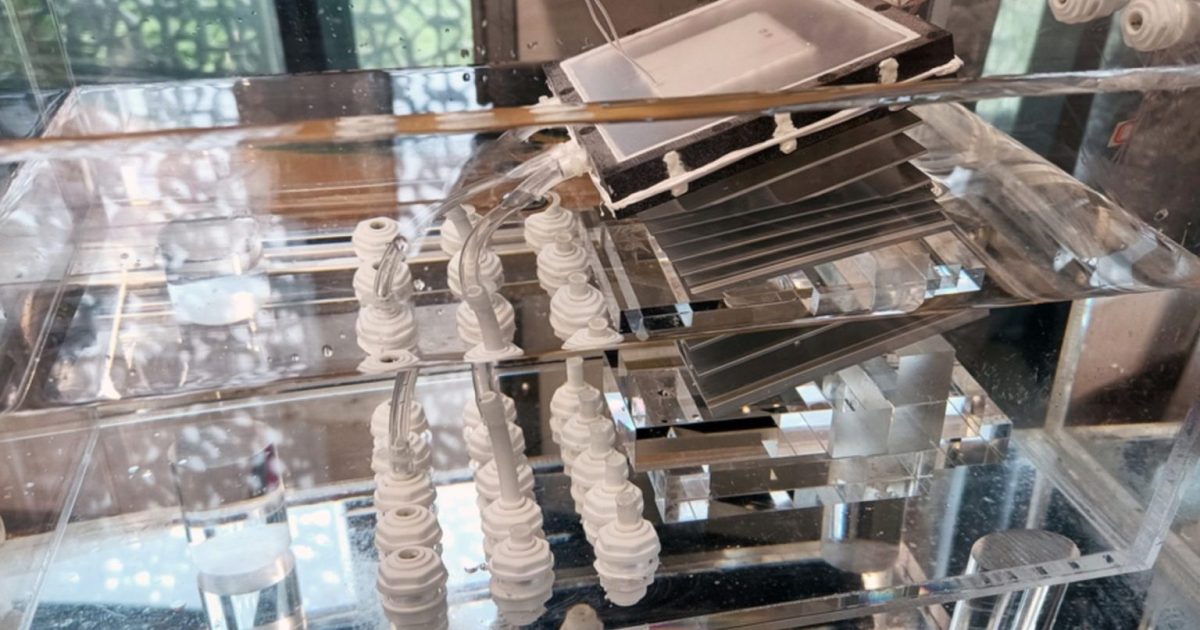MIT engineers and collaborators developed a solar-powered device that avoids salt-clogging issues of other designs.
multiple universities up to 30 years ago
We can make 30 liters of pure water with the fresnel lense from a junk projection TV just by putting two of them over a water tank…
https://www.ijrer.org/ijrer/index.php/ijrer/article/view/3092
MIT now
We designed a severely complicated ten stage solar collector despite our 20 previous publications about massively simple and cheap methods of doing the same thing that we said each time was revolutionary in water production/collection.
Congratulations MIT. Can we just build some of these instead of finding/funding more?
Yeah, no. It won’t be cheaper than tap water. The amount of energy required for desalination, clogging or no, is an additional cost on top of what you need to do to get water drinkable with non salinated water. So no matter the energy source, this cost has to be factored in and that will automatically make it more expensive. No free lunches in physics.
You are ignoring that saltwater is available in many, many more places than freshwater. Building a local efficient desalination plant can absolutely be more cost-efficient than transporting freshwater for hundreds of kilometres. Don’t simplify so much you lose all perspective.
I am not ignoring that, it is also vastly more contaminated than fresh water with microplastics and all the other grabage shipping companies and countries have been dumping into it for the better part of a century now.
I’m not saying it is impossible to do or not a potentially sensible option in certain places, I am saying it is not going to be cheaper than tap water anywhere.
Small question (perhaps dumb on my part as I haven’t slept yet), do these desalination system remove other chemicals such as PFAS, arsenic, lead? I think I read that they use nanofiltration membranes to remove almost everything. How about molecules that are smaller than water (H₂O)? Do they get filtered?
With my (admittedly limited) understanding of the topic, extracting the water from ocean water is a relatively simple process.
The problem is what do you do with the brine afterwards. The process featured in the article makes it harder for the brine to clog the system, which is admittedly an important step. But you can’t put the brine back into the ocean without risking killing local wildlife.
And I’m not under the impression that there are any practical uses for brine, at least not at that scale.
Clump it into a big ball and send to space!
There are no perfect solutions.
Of course, we’ll put the brine back into the ocean. We can run pipelines out miles to disperse the brine and dilute it. We’ll need regulation to ensure this, because no capitalist corporation will do anything that cuts into profits without regulations forcing it.
Second only to air, fresh water is what we all need. We’ll do what we must to have it. Of this I’m certain.
Maybe have ocean voyaging ships (e.g. container ships) do controlled release of brine through their trip?
Though probably no way of achieving this via current economic and legal systems. Even if attempted today, ships would probably be incentivized to dump the entire payload the moment they cross into internal waters.
Truly the most reposted link in lemmy history
Big box with pipe pointing up in the middle that exits the box through the bottom to reach a collection tank
Fill with salt water without going past the pipe opening
Add transparent lid with a slope towards the middle so the water condenses and drops in the pipe
Go do whatever you want all day, you’ve got a passive drinking water creator and nothing to clog since solids just accumulate at the bottom and can be scooped out as needed.
Scooped out and put where?
Most of it is salt, I know many places where they would gladly buy it for winter road maintenance.
It’s a solar still with running water. That’s it.
How tf did it take MIT engineers to figure that out?
It is explained in the link.
A hint, just after the title: “MIT engineers and collaborators developed a solar-powered device that avoids salt-clogging issues of other designs.”
Yeah, they developed a solar still with running water. That’s it. It’s a solar still that uses moving water to get rid of the salt.







